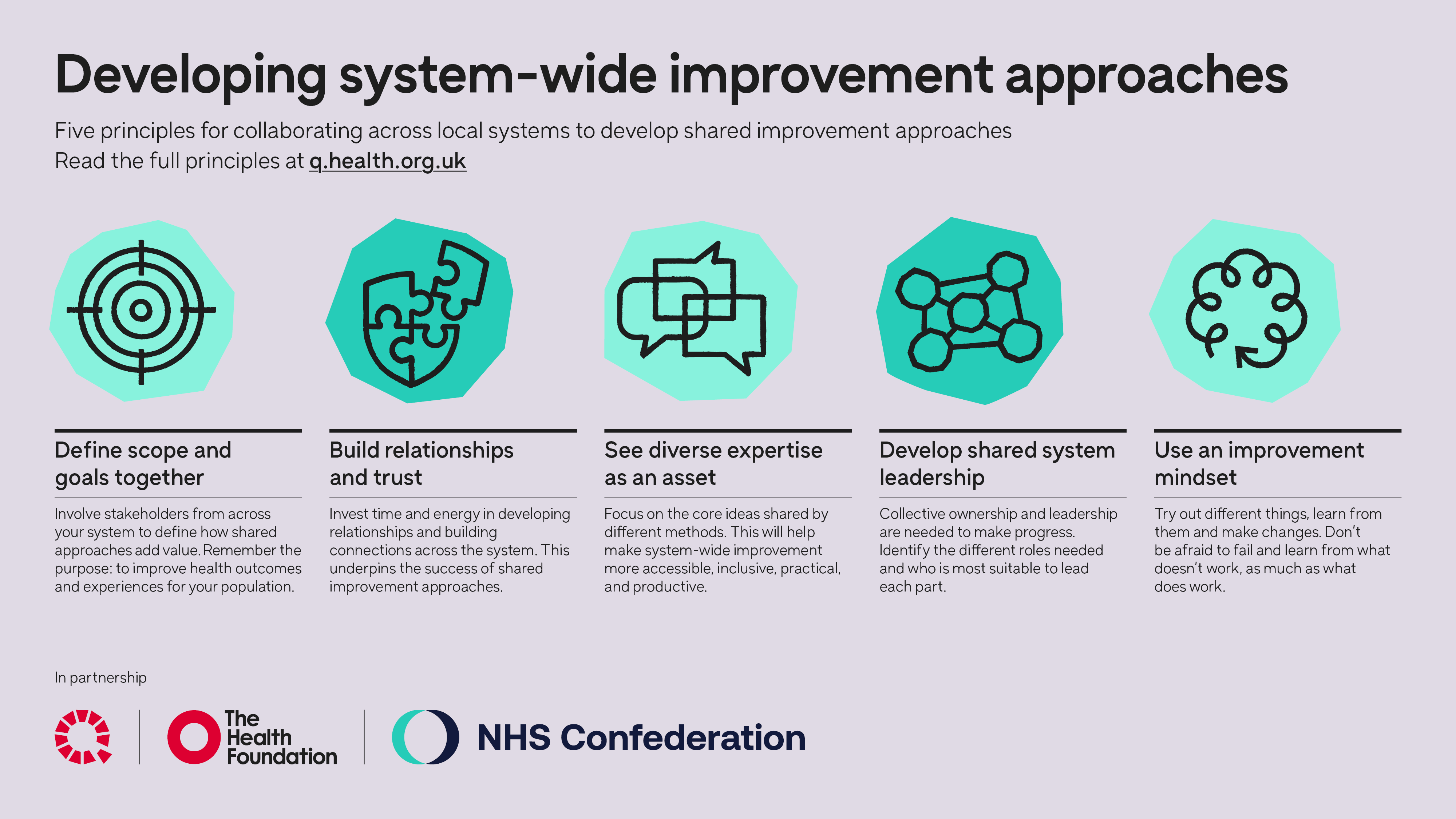These principles are designed to help people working at system level to engage stakeholders, in a way that enables effective and sustainable change in practice. Whether developing an improvement strategy for your local system, considering your own leadership, or taking part in cross-system improvement work, these principles can help start conversations and guide your approach.
The principles can help guide you in developing a shared improvement approach, when the path forward feels complex and challenging. On a practical level, use them to start conversations and discuss how they can help shape the culture in which this work takes place.

1. Define scope and goals together
Sustainable improvement is about bringing every voice that impacts an issue to the table. Involve stakeholders from across your system in defining how shared approaches can add value. Perhaps there’s a need for a common language for organisations new to improvement? Or a shared improvement approach for solving problems that affect the whole system? Strike a balance between ambitious goals and being realistic about what can be achieved, recognising operational and workforce challenges. Remember the core reason for this work: to improve health outcomes and experiences for your patients and population.
2. Build relationships and trust
Invest time and energy in developing relationships and building connections across the system. These underpin the success of shared improvement approaches. Make connections with those outside the NHS and those who have had less engagement and support in improvement. And find opportunities to collaborate on specific issues with people from different organisations and sectors.
3. See diverse expertise as an asset
Understand the different starting points and improvement capability in the system. If organisations in your local system have established their own methods, see this experience as an asset rather than a problem. Different methods offer different strengths. Instead of expecting everyone to use the same improvement methods, focus on the core ideas they share and the problems you’re working on. This will help make system-wide improvement more accessible, inclusive, practical, and productive.
4. Develop shared system leadership
There are improvement leaders at every level of the system. Making progress on a shared improvement approach will need collective ownership and leadership. So, identify the different roles needed to develop and make a success of a shared improvement approach and who is most suitable to lead each part. Encourage inclusivity by engaging across sectors and partners and learn from the expertise in local organisations. Consider what might be helpful at the system level, perhaps there is a role for breaking down siloes and framing a shared problem.
5. Use an improvement mindset
Have a clear shared idea of what you want to achieve. This involves trying out different things, learning from them and making changes. It means not being afraid to fail and learning from what doesn’t work, as much as what does work. Developing a shared improvement approach will be a cultural, as much as a technical, shift. It takes time, and the approach will likely need to adapt as the context changes.